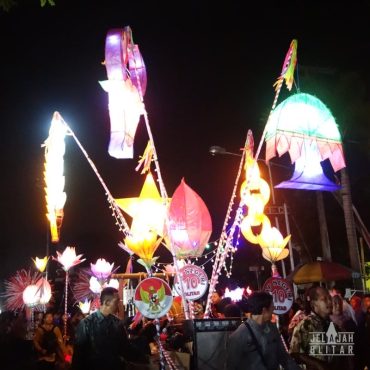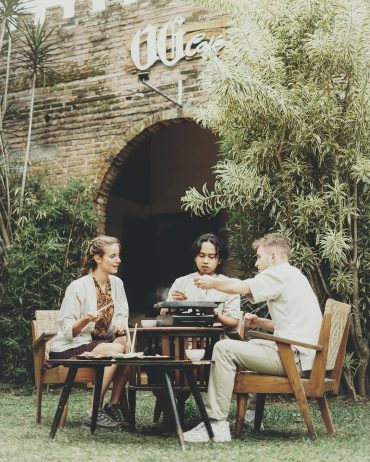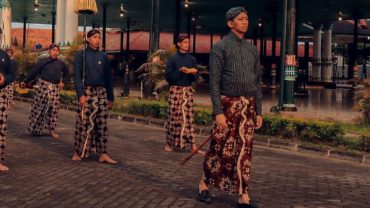Have you ever heard of hanging tomb?
The people of Blitar may be familiar with this, but for those who don't know, they must feel curious.
The tomb in question is Pasanggrahan Patih Djojodigdo which is a religious tourist attraction located on Jalan Melati, Kepanjenkidul Village.
The people of Blitar and its surroundings often refer to this place as the "Hanging Tomb" because of the shape of Patih Djojodigdo's tomb as if it were hanging, although what is hanging is actually only the tomb cupola.
Patih Djojodigdo's Pesanggrahan is considered a sacred place by the local community. Within its vast grounds, there are houses, graves, wells and trees, all of which are considered to have mystical value.
This place is often visited by pilgrims from various regions such as Bali, Kalimantan, Yogyakarta, and Madiun to pray and seek blessings.
In addition, Pasanggrahan Patih Djojodigdo is also the location of the tumpeng parade during the anniversary of Kepanjenkidul Kelurahan.
The origin of the legend about Patih Djojodigdo according to the people of Kepanjenkidul Village dates back to the Dutch era.
Bawadiman or Patih Djojodigdo is a descendant of RMT. Kartodiwirjo, who is none other than the Regent of Kulonprogo.
Patih Djojodigdo was a figure who lived during the Dutch colonial period. He was known as Prince Diponegoro's right-hand man and was trusted to help fight the Dutch colonisers.
Bawadiman was given the ajian pancasona by Eyang Djugo, which meant that he could not die if he stepped on the ground.
Because of his intelligence and magic, in southern Blitar he was able to defeat the invaders and put the Dutch in disarray.
Bawadiman was appointed patih of Blitar under the name RM. Bawadiman Djojodigdo.
Bawadiman was also the person who cleared the teak forest to establish a village in Blitar City, Kepanjenkidul.
Patih Djojodigdo also built a house for his family called Pasanggrahan Patih Djojodigdo.
In the past, this guesthouse was used as a place for young people to gain knowledge about leadership.
The function of the existence of Pasanggrahan Patih Djojodigdo based on the views of Malinowski, William R. Bascom, and Alan Dundes is as follows:
- To fulfil the needs of human instinct as a projective system.
- As a tool to legitimise cultural institutions and institutions.
- As an educational tool for children or the younger generation.
- As a tool to monitor that norms are always followed by the community.
- As a tool for social sanction or punishment.
In addition, Pasanggrahan Patih Djojodigdo also provides benefits for the supporting community, where these benefits are also referred to as cultural values.
The cultural values contained in the existence of the legend of Pasanggrahan Patih Djojodigdo refer to the theory of Djarmaris, who divides cultural values into five parts related to humans, including:
- The value of believing in something.
- Love for the environment.
- Humans should always respect their elders.
- Humans must have an attitude of compassion.
- Humans must have a helping attitude.
- Humans must have a canny attitude.
- Humans must have an attitude of acceptance (nriman).
In addition, Pasanggrahan Patih Djojodigdo in Blitar City also contains various meanings.
One of them is the meaning of symbols contained in the equipment and offerings that must be present during the Haul Patih Djojodigdo ceremony every 1 Ruwah.
The meaning of the symbol also binds the supporting community to uphold and preserve existing traditions.
Besides the mystery of the hanging tomb, Noegroho Museum located at De Karanganjar Koffieplantage also holds an unsolved mystery.
The sacred objects displayed inside exude a mystical aura, inviting curiosity and speculation.
Despite its mystery, the Noegroho Museum is still an interesting place to visit.
Here, we can learn about the history and culture of East Java, especially Blitar City.







